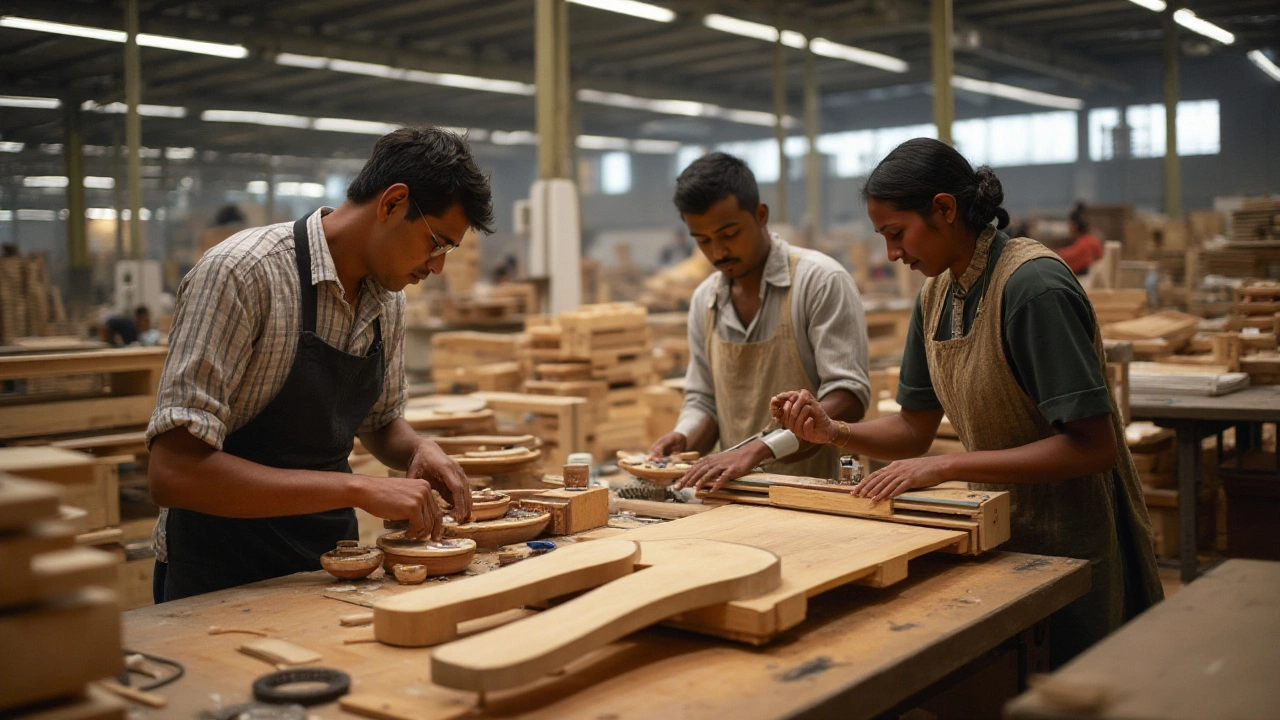Furniture Production
When talking about furniture production, the process of turning raw materials into finished pieces for homes, offices, and public spaces. Also known as furnishing manufacturing, it blends design, engineering, and logistics. IKEA, a global retailer that relies on a vast network of Indian and overseas factories illustrates how a strong supply chain, the coordinated flow of materials, components, and finished goods drives cost efficiency and product consistency. Meanwhile, material choices matter: wood, a timeless, renewable resource used for solid frames and decorative panels offers durability and a natural look, while MDF, medium-density fiberboard that provides a smooth surface for laminates and paints gives designers flexibility at lower cost. These entities interact – material selection influences supply chain complexity, and supply chain quality impacts the final furniture’s performance.
Key Elements Shaping Modern Furniture Production
Today's furniture makers balance three core pillars. First, material selection determines strength, aesthetics, and environmental impact; wood, metal, MDF, and engineered composites each bring distinct attributes. Second, manufacturing processes such as CNC cutting, edge banding, and finishing dictate precision and speed. Third, logistics – from raw material sourcing to last‑mile delivery – ensure products reach retailers like IKEA or local Indian showrooms on time. For example, an Indian furniture manufacturer that sources locally grown teak can reduce transport emissions, shorten lead times, and market the pieces as eco‑friendly. Conversely, relying on imported MDF may lower raw material cost but adds customs duties and longer shipping, affecting overall pricing. Understanding how these factors intertwine helps businesses make smarter decisions about where to invest – be it in advanced CNC machinery or stronger supplier partnerships.
Looking ahead, sustainability and customization are reshaping the industry. Consumers increasingly ask for furniture made from reclaimed wood or low‑VOC finishes, pushing producers to adopt circular‑economy practices. At the same time, digital design tools enable on‑demand production, reducing inventory waste. Indian manufacturers, for instance, are leveraging local craftsmanship while integrating CNC technology to meet global standards, positioning themselves as viable partners for brands like IKEA. By keeping an eye on material trends, supply‑chain innovations, and market demands, you can anticipate shifts before they become mainstream. Below, you’ll find a curated collection of articles that dive deeper into these topics – from the inside story of IKEA’s supplier network to a guide on choosing the best furniture material for Indian homes.

Ashley Furniture is among the leading furniture brands in the world, known for its classy, durable, and stylish furniture designs. This article explores where Ashley Furniture manufactures its products in India, its manufacturing processes, and the unique attributes that make its furniture a favorite globally. Readers will gain insights into the brand's strategic choices in manufacturing locations and the influence of local craftsmanship on their product lines. (Read More)







